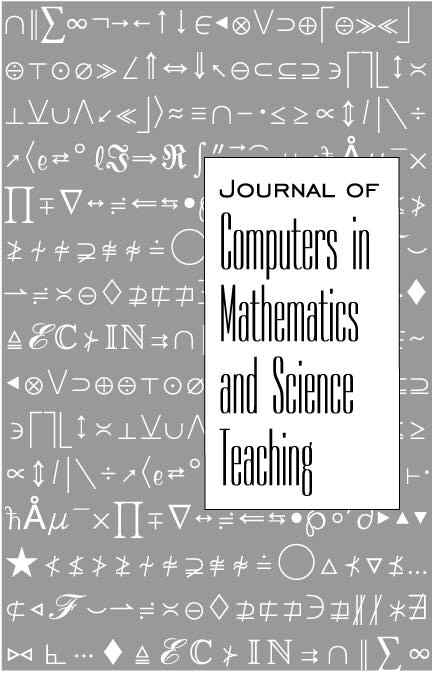
The Brain’s Response to Digital Math Apps: A Pilot Study Examining Children’s Cortical Responses During Touch-Screen Interactions
article
Joseph Baker, Stanford, United States ; Patricia Moyer-Packenham, Utah State University, United States ; Stephen Tucker, University of Louisville, United States ; Jessica Shumway, Kerry Jordan, Ron Gillam, Utah State University, United States
JCMST Volume 37, Number 1, ISSN 0731-9258 Publisher: Association for the Advancement of Computing in Education (AACE), Waynesville, NC USA
Abstract
Functional near-infrared spectroscopy (fNIRS) is an easy to use neuroimaging technique that is portable and maintains a liberal tolerance to movement. As such, fNIRS represents an ideal tool to observe children’s neural activity as they engage in real-world classroom activities, such as the interaction with digital math apps on an iPad. Here, we provide the results of an initial hypothesis-generating pilot study designed to assess patterns of cortical activity that occur when children interact with digital math apps, that contained virtual manipulatives, on a touch-screen device. Our results highlight cortical activity within the bilateral intraparietal sulci and dorsolateral prefrontal cortices as children interacted with three different digital math apps, but not during rest. Our results provide valuable proof-of-concept that fNIRS may be used to assess math-related cortical activity during children’s naturalistic use of digital math apps on a touch-screen device.
Citation
Baker, J., Moyer-Packenham, P., Tucker, S., Shumway, J., Jordan, K. & Gillam, R. (2018). The Brain’s Response to Digital Math Apps: A Pilot Study Examining Children’s Cortical Responses During Touch-Screen Interactions. Journal of Computers in Mathematics and Science Teaching, 37(1), 69-86. Waynesville, NC USA: Association for the Advancement of Computing in Education (AACE). Retrieved September 1, 2024 from https://www.learntechlib.org/primary/p/180516/.
© 2018 Association for the Advancement of Computing in Education (AACE)
References
View References & Citations Map- Anderson, J.R., Lee, H.S., & Fincham, J.M. (2014). Discovering the structure of mathematical problem solving. Neuroimage, 97, 163–177.
- Arsalidou, M., & Taylor, M.J. (2011). Is 2+ 2= 4? Meta-analyses of brain areas needed for numbers and calculations. Neuroimage, 54(3), 2382–2393.
- Baker, J.M., Martin, T., Aghababyan, A., Armaghanyan, A., & Gillam, R. (2015). Cortical Activations During a Computer-Based Fraction Learning Game: Preliminary Results from a Pilot Study. Technology, Knowledge and Learning, 1–17.
- Boyce, A.K. (2014). Deep Gamification: Combining Game-based and Playbased Methods. North Carolina State University. PhD Dissertation. Available online: https://repository.lib.ncsu.edu/ir/bitstream/1840.16/9788/1/etd.pdf Accessed July 11, 2016.
- Butterworth, B., & Kovas, Y. (2013). Understanding neurocognitive developmental disorders can improve education for all. Science, 340(6130), 300– 305.
- Cantlon, J.F., & Li, R. (2013). Neural Activity during Natural Viewing of Sesame Street Statistically Predicts Test Scores in Early Childhood. PLoS Biol, 11(1), e1001462. ., & Killingsworth, S.S. (2016). Digital games, design, and learning: A systematic review and meta-analysis. Review of Educational Research, 86(1), 79-122.
- Cui, X., Bray, S., Bryant, D.M., Glover, G.H., & Reiss, A.L. (2011). A quantitative comparison of NIRS and fMRI across multiple cognitive tasks. Neuroimage, 54(4), 2808–2821.
- Geary, D.C. (2011). Cognitive predictors of achievement growth in mathematics: A 5-year longitudinal study. Developmental Psychology, 47(6), 1539– 1552.
- Geary, D.C., Hoard, M.K., Nugent, L., & Bailey, D.H. (2013). Adolescents’ functional numeracy is predicted by their school entry number system knowledge. PLoS ONE 8(1): e54651.
- Habgood, M.J., & Ainsworth, S.E. (2011). Motivating children to learn effectively: Exploring the value of intrinsic integration in educational games. The Journal of the Learning Sciences, 20(2), 169-206.
- Jasińska, K.K., & Petitto, L.A. (2014). Development of Neural Systems for Reading in the Monolingual and Bilingual Brain: New Insights From Functional Near Infrared Spectroscopy Neuroimaging. Developmental Neuropsychology, 39(6), 421–439. ., & Westenskow, A. (2013). Effects of Virtual Manipulatives on Student Achievement and Mathematics Learning. International
- Moyer-Packenham, P.S., Bullock, E.P., Shumway, J.F., Tucker, S.I., Watts, C., Westenskow, A., Anderson-Pence, K.L., Maahs-Fladung, C., Boyer-Thurgood, J., Gulkilik, H., & Jordan, K. (2016). The role of affordances in children’s learning performance and efficiency when using virtual manipulative mathematics touch-screen apps. Mathematics Education Research Journal, 28(1), 79-105.
- Paek, S. (2012). The Impact of Multimodal Virtual Manipulatives on Young Children’s Mathematics Learning. ProQuest LLC. Cortical Response To Math Apps modality in virtual manipulative design (pp. 1747–1752). Presented at the
- Riconscente, M. (2011). Mobile learning game improves 5th graders’ fractions knowledge and attitudes. Los Angeles: GameDesk Institute.
- Rosenberg-Lee, M., Barth, M., & Menon, V. (2011). What difference does a year of schooling make? Neuroimage, 57(3), 796–808.
- Shuler, C., Levine, Z., & Ree, J. (2012). ILearn II: An analysis of the education category of Apple’s app store. Presented at the An Analysis of the Education Category of Apples App Store, New York.
- Van Eck, R. (2015). Digital game-based learning: Still restless, after all these years. EDUCAUSE Review, 50(6), 12-28.
- Wang, Y., & Holland, S.K. (2014). Comparison of Functional Network Connectivity for Passive-Listening and Active-Response Narrative Comprehension in Adolescents. Brain Connectivity, 4(4), 273–285.
These references have been extracted automatically and may have some errors. Signed in users can suggest corrections to these mistakes.
Suggest Corrections to ReferencesCited By
View References & Citations Map-
The Role of Design Features in the Affordances of Digital Math Games
Patricia Moyer-Packenham, Christina Lommatsch, Kristy Litster, M. Jill Ashby & Allison Roxburgh, Utah State University, United States
Society for Information Technology & Teacher Education International Conference 2018 (Mar 26, 2018) pp. 465–473
These links are based on references which have been extracted automatically and may have some errors. If you see a mistake, please contact info@learntechlib.org.
